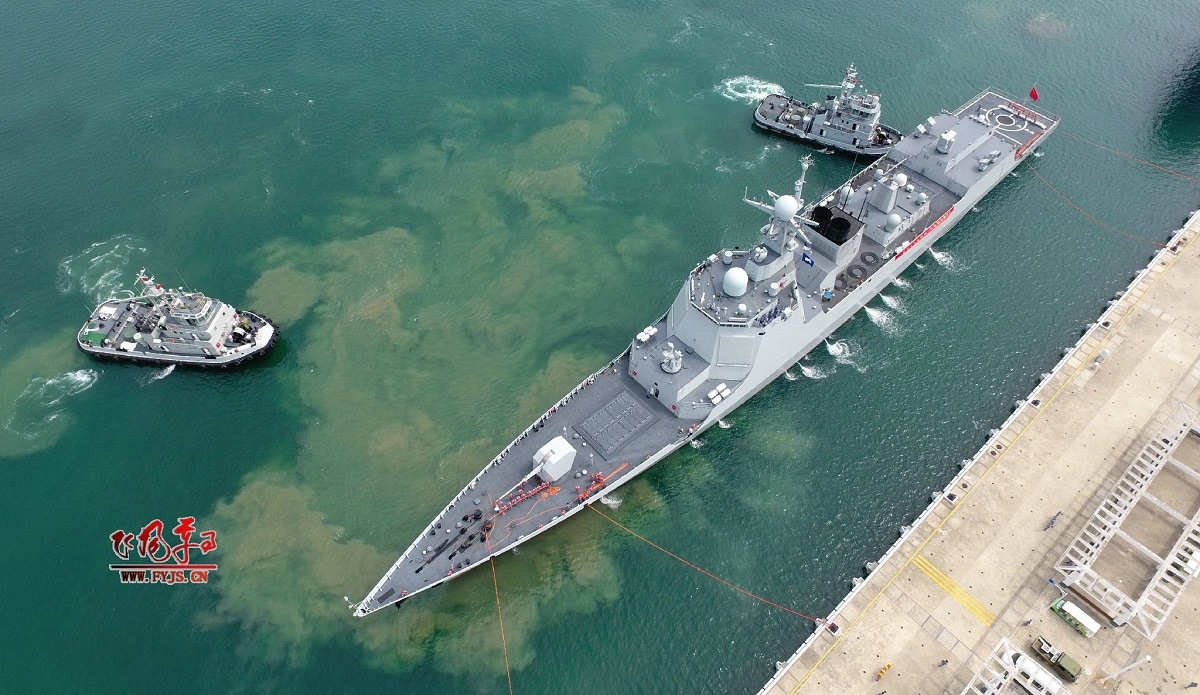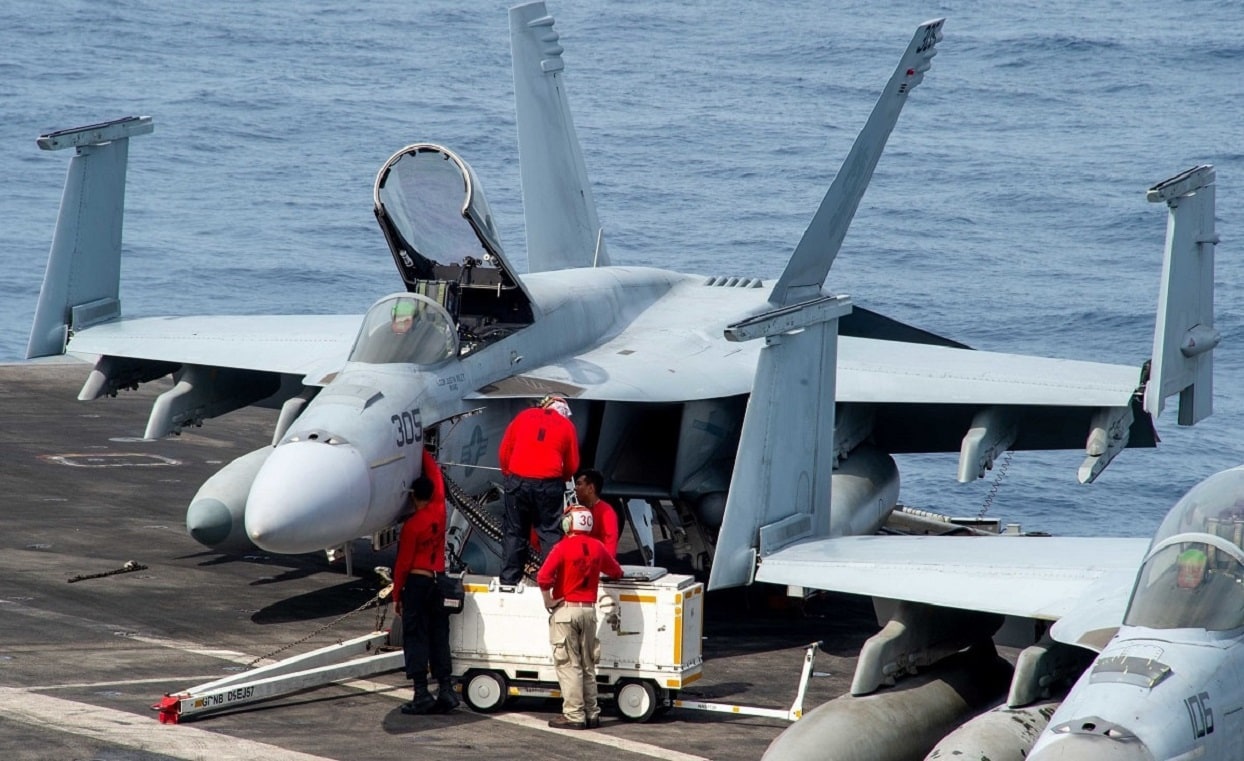As tensions with China increase in the Indo-Pacific region, the U.S. Navy held joint exercises with its Japanese counterparts close to the highly contested South China Sea.
The training exercises come in the wake of Chinese truculence in the area. In the span of a few days in October, Beijing sent more than 150 aircraft, including fighter jets and bombers capable of dropping nuclear bombs, into the Taiwanese air-defense identification zone.
A nation’s air-defense identification zone isn’t considered territorial airspace but it is still perceived as a hostile move if another nation violates it.
Force Projection
The Carl Vinson Carrier Strike Group and Japan Maritime Self-Defense Force Izumo-class helicopter destroyer Kaga conducted a series of maritime security operations designed to test preparedness and capabilities and increase interoperability within the American fleet and with partners and allies.
More specifically, the two navies conducted flight operations, surface and tactical air operations, refueling-at-sea operations, and maritime precision strike exercises.
Besides the aircraft carrier USS Carl Vinson, Carrier Strike Group One is composed of two Ticonderoga-class guided-missile cruisers (USS Lake Champlain and USS Shiloh), an Arleigh Burke-class guided-missile destroyer (USS Stockdale), and several support ships. In addition, the aircraft carrier carries nine air squadrons, with a mix of F-35Cs, F-18E/F Super Hornets, EA-18G Growlers, and CMV-22B Ospreys.
“Bilateral operations are one key component in our collective maritime readiness. The Indo-Pacific is a dynamic region and by continuing to conduct routine operations with our allies and partners throughout international waters and airspace, we demonstrate our unwavering commitment to upholding international law, on the sea and in the air, and to ensuring [sic] that all nations can do the same without fear or contest,” Rear Admiral Dan Martin, the commanding officer of Carrier Strike Group One, said in a press release.
U.S. Presence in the Region
Taiwan and the South China Sea are on the top of the Pentagon’s priorities in the Indo-Pacific region.
Recently, the Biden administration revealed the presence of U.S. troops in Taiwan, sparking a conflict of words with Beijing. In reality, however, U.S. special operations forces have been training their Taiwanese counterparts in Taiwan or elsewhere for years now. So the revelation was more of a publicity stunt meant to show U.S. support for Taipei without going too far rather than an actual new development. And Beijing certainly knew that.
It remains to be seen how far the White House will go to support Taiwan against Beijing’s truculence.
But besides Taiwan, the South China Sea remains a point of contention. China has managed to rally almost the whole region against it with its illegal claims to the area and the construction and militarization of man-made islands there.
The joint exercises coincided with the first visit of the new Secretary of the Navy into the Indo-Pacific area of operations. Secretary Carlos Del Toro will visit Japan, South Korea, and Papua New Guinea.
Del Toro re-emphasized the importance of the region to the U.S. “The Indo-Pacific region is a priority for the Department of Defense and the Department of Navy,” the Secretary of the Navy said. “To ensure U.S. dominance against an evolving threat environment, we must be present, persistent and powerful in our integrated maritime strategy. We must invest in the health, readiness and capability of our fleet and strengthen relationships with our naval partners in the region.”

Image: Chinese Internet.
In the event of a conflict, the Chinese Navy, the largest in the world if fully mobilized, stands in between the U.S. Navy’s commitment to the defense of the region.
1945’s New Defense and National Security Columnist, Stavros Atlamazoglou is a defense journalist specializing in special operations, a Hellenic Army veteran (national service with the 575th Marine Battalion and Army HQ), and a Johns Hopkins University graduate.

